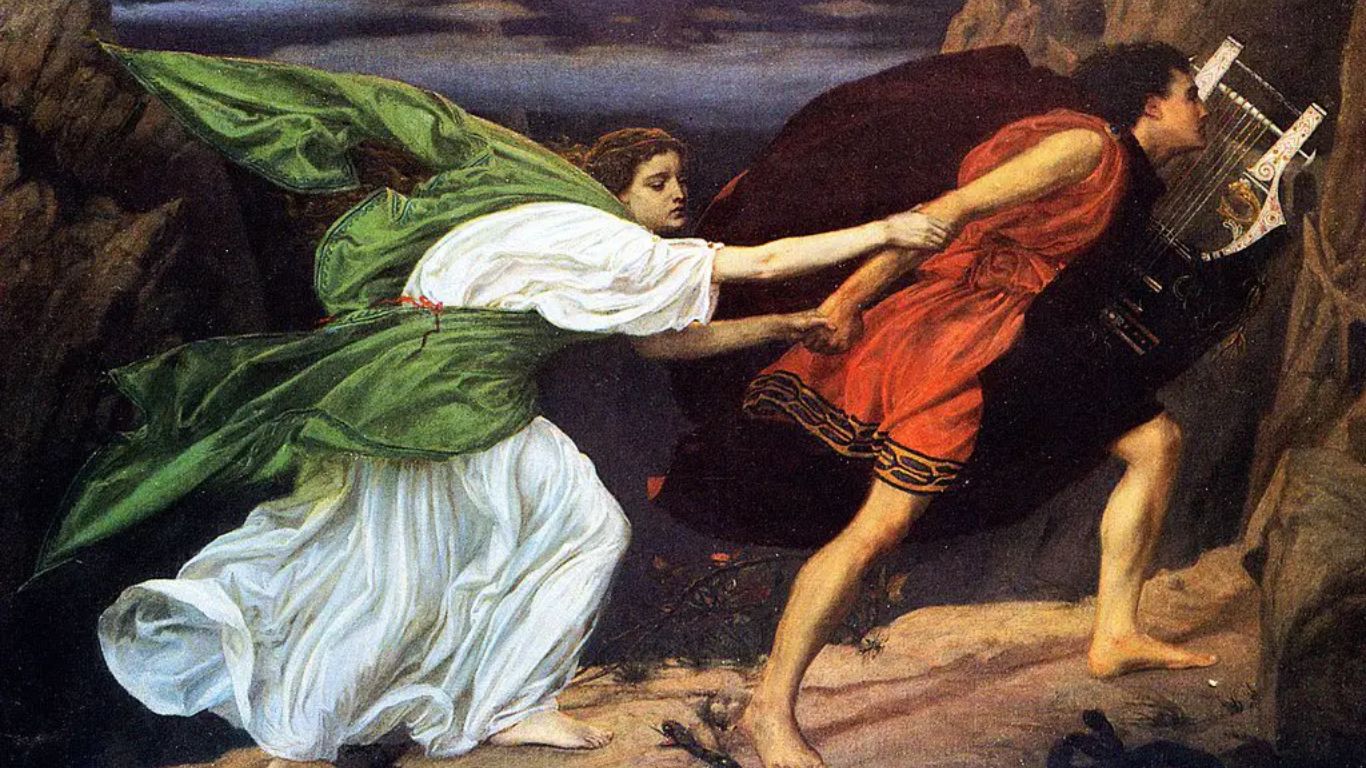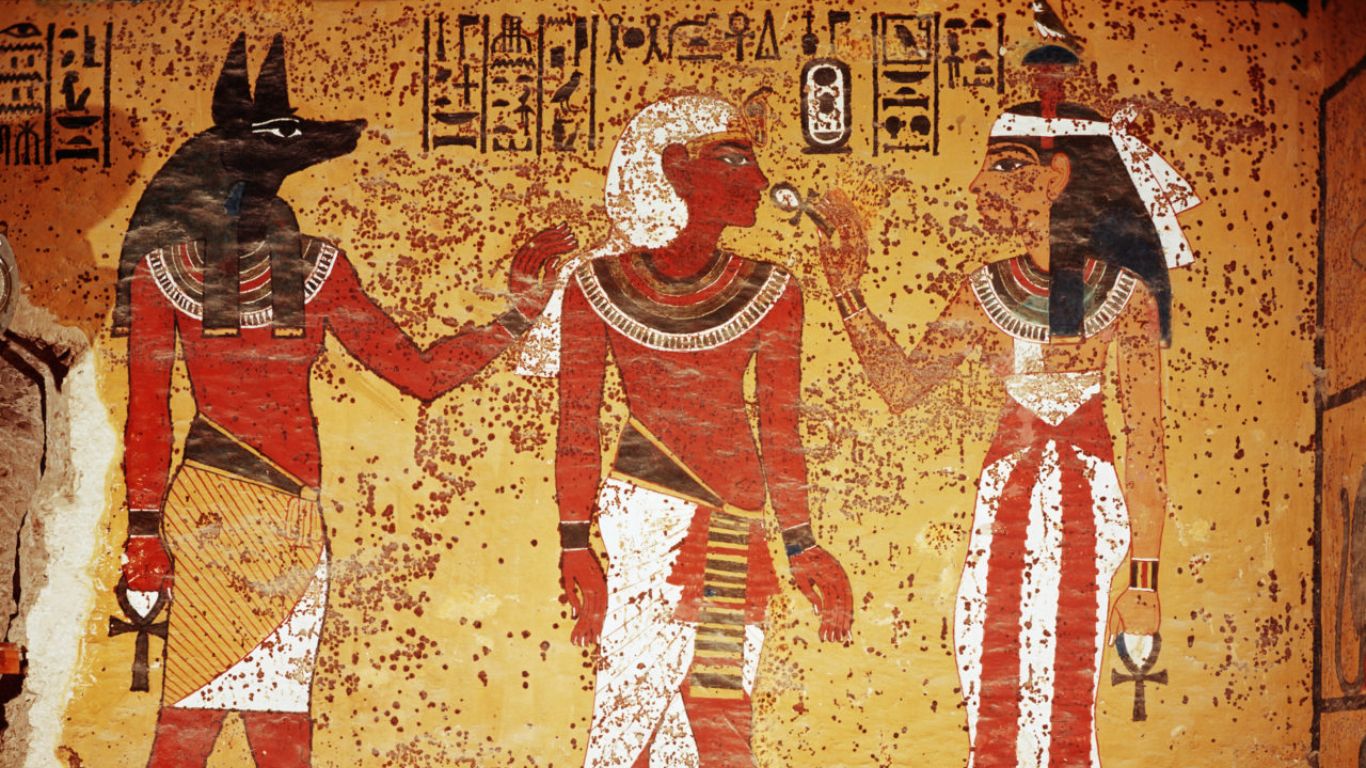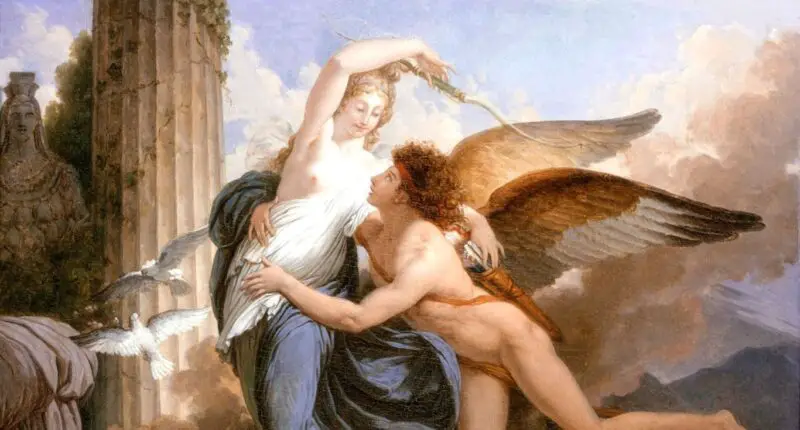Love and Lust in Mythology: Throughout human history, love and lust have been central themes in literature, art, and mythology. Stories of passionate love affairs, unrequited love, and tragic endings have captivated audiences for centuries. Mythology, in particular, is rich with tales of divine love and lust, exploring the complexities of human emotion and desire through the lens of the supernatural. From the passionate love of Cupid and Psyche in Roman mythology to the tragic story of Tristan and Isolde in Celtic mythology, these stories offer insight into the human experience and the many ways in which love and lust can shape our lives.
Love and Lust in Mythology
Cupid and Psyche (Roman Mythology) – Love

Cupid and Psyche is a well-known Roman myth that explores the themes of love, lust, jealousy, and curiosity. The story follows the beautiful princess Psyche, who was ordered by the jealous goddess Venus to fall in love with the ugliest creature on earth. However, Cupid, the god of desire, falls in love with Psyche and visits her in secret. Psyche eventually becomes curious about her lover’s identity and accidentally spills hot oil on him, causing him to flee in anger. After many trials, the couple reunites, and they are eventually married. The tale highlights the power of love to overcome jealousy and the consequences of giving in to one’s curiosity.
Proserpina abduction (Roman Mythology) – Lust

The myth of Proserpina tells the story of how Pluto, the god of the underworld, abducted Proserpina, the daughter of Ceres, while she was picking flowers. He took her to the underworld to make her his wife. Ceres, Proserpina’s mother, was devastated and searched everywhere for her daughter. Eventually, Jupiter, the king of the gods, intervened and made a deal with Pluto: Proserpina would spend half of each year in the underworld as Pluto’s wife, and the other half with her mother in the world above. This myth explains the changing of the seasons, as Proserpina’s return to the world above heralds the arrival of spring.
Orpheus and Eurydice (Greek Mythology) – Love

The tragic love story of Orpheus and Eurydice is a Greek myth that explores the depths of grief and the dangers of temptation. Orpheus, a talented musician, falls in love with Eurydice, a beautiful nymph, but when she dies, he descends to the underworld to retrieve her. Hades allows Orpheus to bring Eurydice back to the world of the living, but warns him not to look back. However, Orpheus cannot resist the temptation and turns back to see if Eurydice is following him, causing her to be pulled back into the underworld. The myth serves as a cautionary tale about the consequences of giving in to one’s desires and highlights the destructive power of grief.
Europa abduction (Greek Mythology) – Lust

The Story of Zeus and Europa is a well-known Greek myth that tells the story of how Zeus, the king of the gods, fell in love with Europa, a beautiful mortal woman. In order to win her affection, Zeus transformed himself into a gentle bull and approached her on the beach. Europa, enchanted by the bull’s docile nature, climbed onto his back. Zeus then revealed his true identity and abducted Europa, taking her to Crete where he made her his lover and showered her with gifts. This myth highlights Zeus’ ability to change his form and his tendency to be attracted to mortal women, ultimately resulting in Europa’s abduction.
Tristan and Isolde (Celtic Mythology) – Love

The story of Tristan and Isolde is a tragic love story from Celtic mythology that explores themes of forbidden love and betrayal. Tristan, a knight, was sent to retrieve the beautiful Isolde for his uncle, King Mark. During their journey, they accidentally consumed a love potion, which bound them together forever. Although Tristan married King Mark upon their return to England, he continued to love Isolde in secret. Their love was ultimately doomed, and they died together. The story highlights the destructive power of jealousy and the consequences of betraying those we love.
Pursuit of Diarmuid and Gráinne (Celtic Mythology) – Lust

The Pursuit of Diarmuid and Gráinne is a tale of forbidden love in Celtic mythology. Gráinne was betrothed to Fionn MacCumhail, the leader of the Fianna, but fell in love with Diarmuid, one of Fionn’s warriors. The couple eloped, and Fionn pursued them relentlessly. However, their love was not meant to be, as Fionn eventually caught up with them and had Diarmuid killed by a wild boar. Gráinne was forced to return to Fionn’s side, but their relationship was forever tainted by the tragic events that had transpired. The story highlights the powerful emotions of love and jealousy, and the lengths to which people will go to protect their hearts.
Osiris and Isis (Egyptian Mythology) – Love

Osiris and Isis are prominent figures in Egyptian mythology and were the god and goddess of fertility, respectively. Osiris was murdered by his envious brother Set, but Isis was able to bring him back to life. Their love story represents the idea of life, death, and rebirth, as Osiris was believed to be the god of the afterlife. The pair were also associated with the Nile River, which was integral to the prosperity of the people of Egypt. The myth emphasizes the importance of the natural world and the cycles of life and death that govern it.
Anubis and Nephthys (Egyptian Mythology) – Lust

Nephthys, the goddess of death and mourning, was envious of her sister Isis’ relationship with Osiris, the god of the afterlife. In an attempt to fulfill her desire for a child, she disguised herself as Isis and seduced Osiris’ son, Anubis, the god of funerary rites. Anubis was unaware of Nephthys’ deception and they had a passionate affair, resulting in the birth of their son, Khenty-imentiu. When Anubis discovered the truth, he was angry and felt betrayed. However, he ultimately forgave Nephthys and Khenty-imentiu was revered as a god of funerary rites and embalming. This myth explores themes of love, deception, and the importance of fertility in ancient Egyptian culture.
Also Read: What Mythology Can Teach Us


